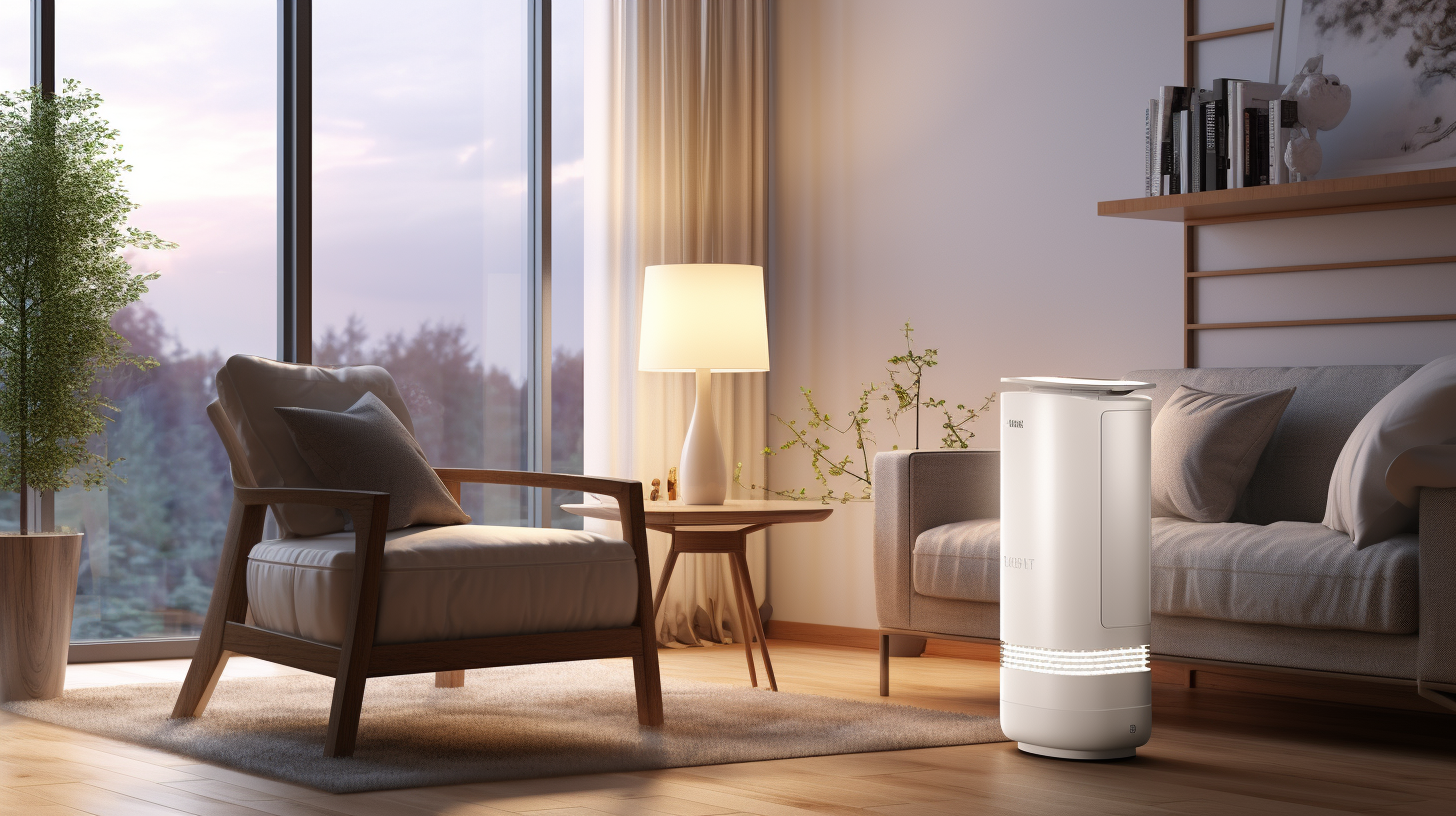Are you wondering if dehumidifiers are expensive to run? Look no further! In this article, we will delve into the cost of running a dehumidifier and explore the factors that influence its energy consumption.
We will also compare the energy efficiency of different dehumidifier models and provide you with tips to reduce operating costs.
By the end, you will be equipped with the knowledge needed to calculate the financial impact of running a dehumidifier.
So, let’s get started!
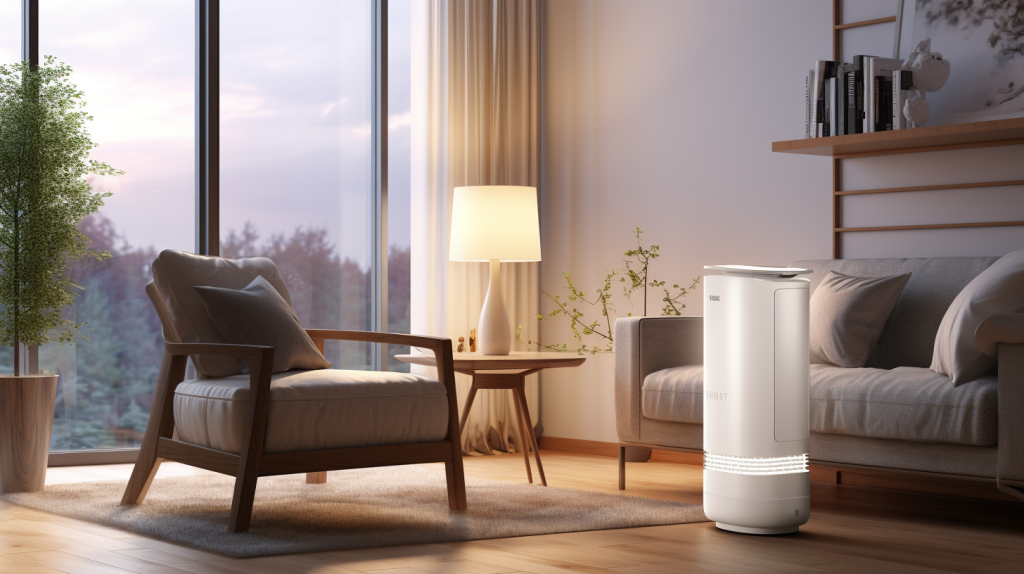
Key Takeaways – Read on to Find Out About the Cost of Running a Dehumidifier
- Room size, temperature, and humidity levels are factors that affect the energy consumption of dehumidifiers.
- Choosing an energy-efficient model can help reduce electricity bills.
- Regular maintenance, proper placement, and energy-conscious habits can help reduce dehumidifier operating costs.
- Calculating the financial impact of running a dehumidifier involves assessing energy consumption, comparing electricity rates, and considering potential savings.
The Cost of Running a Dehumidifier
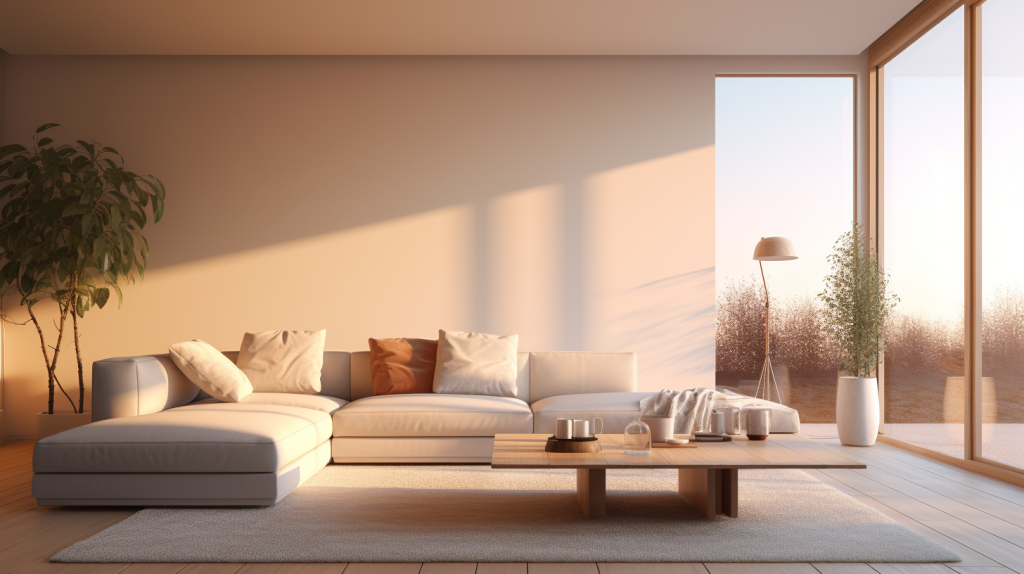
Do you know how much it’ll cost to run a dehumidifier?
When considering the cost of running a dehumidifier, it’s important to take into account factors such as measuring dehumidifier power usage and evaluating dehumidifier energy saving features.
To calculate how much your dehumidifier will cost to run, you’ll need to know how much electricity it uses. To measure dehumidifier power consumption, you can refer to its wattage rating, which indicates the amount of electricity it consumes. By multiplying the wattage rating by the number of hours the dehumidifier is used per day, you can calculate the daily energy consumption.
Additionally, some dehumidifiers come with energy-saving features, such as humidity sensors and programmable timers, which can help reduce energy usage. These features allow the dehumidifier to operate only when necessary, optimizing its energy efficiency.
Factors affecting dehumidifier energy consumption include the size of the space it is used in, the humidity levels in the area, and the temperature. Larger spaces or areas with higher humidity levels may require a dehumidifier to work harder and consume more energy. Similarly, higher temperatures can also increase energy usage as the dehumidifier needs to cool the air while removing moisture.
Understanding these factors and considering energy-saving features can help you make an informed decision about the cost of running a dehumidifier and choose an energy-efficient option that suits your needs.
How Much Electricity Does a Dehumidifier Use?
Factors Affecting Dehumidifier Energy Consumption
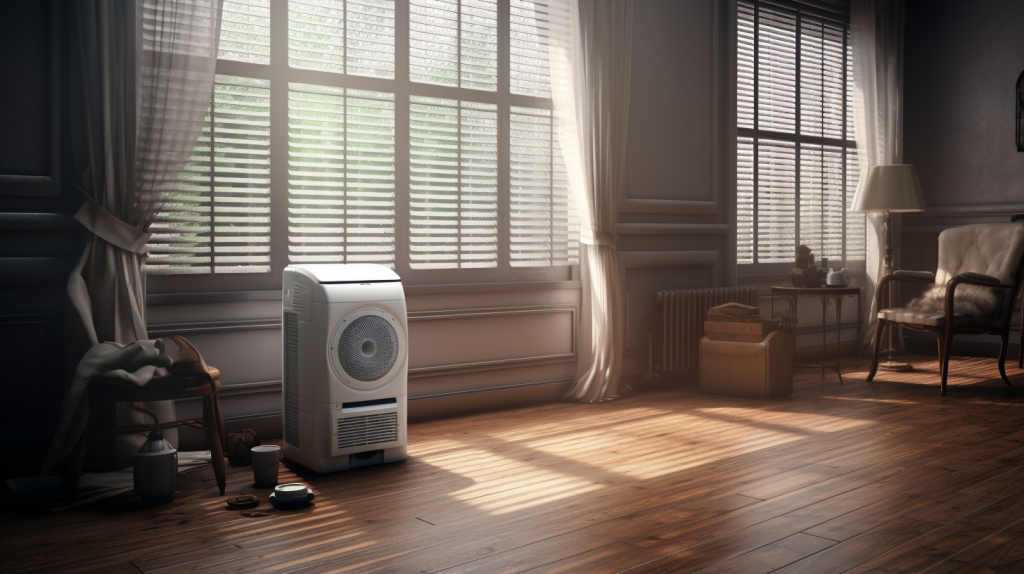
One factor that affects how much energy dehumidifiers consume is the size of the room they are operating in. The larger the room, the more energy the dehumidifier will need to effectively control the humidity. This is because a larger room contains more air and moisture, requiring the dehumidifier to work harder to remove the excess moisture and maintain the desired humidity levels.
In addition to room size, there are other factors that can impact the energy consumption of a dehumidifier:
- Temperature: Higher temperatures generally require more energy for dehumidification, as warm air holds more moisture than cold air. So, if you are using a dehumidifier in a hot and humid environment, it will consume more energy to remove the excess moisture.
- Humidity levels: If the humidity levels in your room are extremely high, the dehumidifier will need to work harder and consume more energy to bring the humidity down to a comfortable level.
- Energy efficiency: The energy efficiency of the dehumidifier itself plays a significant role in energy consumption. Choosing an energy-efficient model can help reduce the impact on your electricity bills.
It is important to consider these factors when using a dehumidifier to effectively control humidity while minimizing its impact on your electricity bills.
Comparing Energy Efficiency of Dehumidifier Models
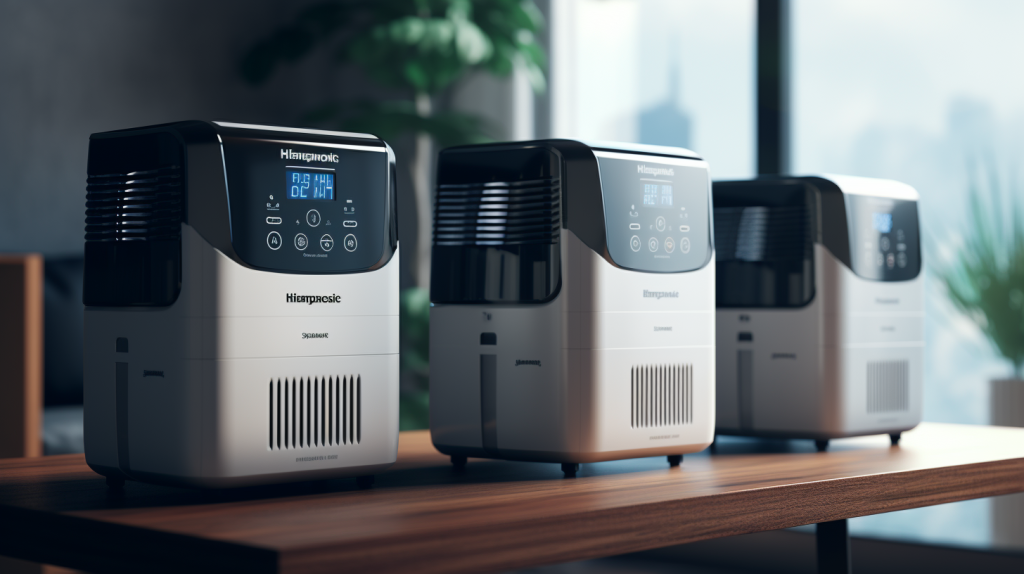
When comparing energy efficiency of dehumidifier models, it’s important to consider factors like room size, temperature, and humidity levels. These factors can greatly impact the energy consumption of the dehumidifier and ultimately affect your long-term cost analysis.
One important aspect to look for in dehumidifiers is energy-saving features. Energy-efficient dehumidifiers now often come with programmable timers, allowing you to set specific operating hours and reduce energy usage when the room is not in use. Additionally, some dehumidifiers have built-in sensors that can detect the current humidity levels and adjust their operation accordingly, saving energy by running only when necessary.
Another feature to consider is the energy efficiency rating. Look for high Energy Star dehumidifiers, as these models have been tested and proven to meet strict energy efficiency guidelines set by the Environmental Protection Agency. These models may have higher upfront costs, but they reduce the amount of energy used and can save you money in the long run.
Tips to Reduce the Cost to Run a Dehumidifier
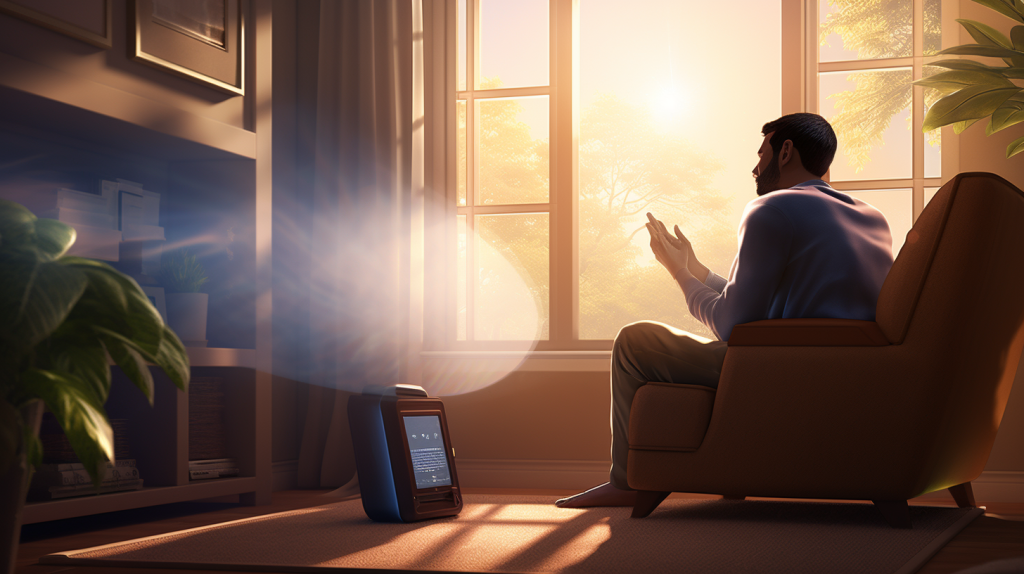
To lower your dehumidifier operating costs, make sure you regularly clean and replace the air filters. Dirty air filters can obstruct airflow, forcing your dehumidifier to work harder and use more energy. By keeping the filters clean, you optimize the efficiency of your dehumidifier and reduce energy consumption.
Here are some additional tips to help you reduce dehumidifier operating costs:
- Check for leaks: Inspect your dehumidifier for any leaks or cracks that may cause air leakage. This can result in increased humidity levels and a higher workload for your dehumidifier.
- Optimize humidity levels: Set your dehumidifier to maintain the ideal humidity level for your space. Keeping the humidity within the recommended range not only helps prevent mold and mildew growth but also ensures that your dehumidifier doesn’t have to work harder than necessary.
- Proper placement: Position your dehumidifier in an area where it can effectively circulate air. Avoid placing it near walls or furniture that may obstruct airflow. This allows you to run the dehumidifier efficiently and use less energy.
Calculating the Financial Impact of Running a Dehumidifier
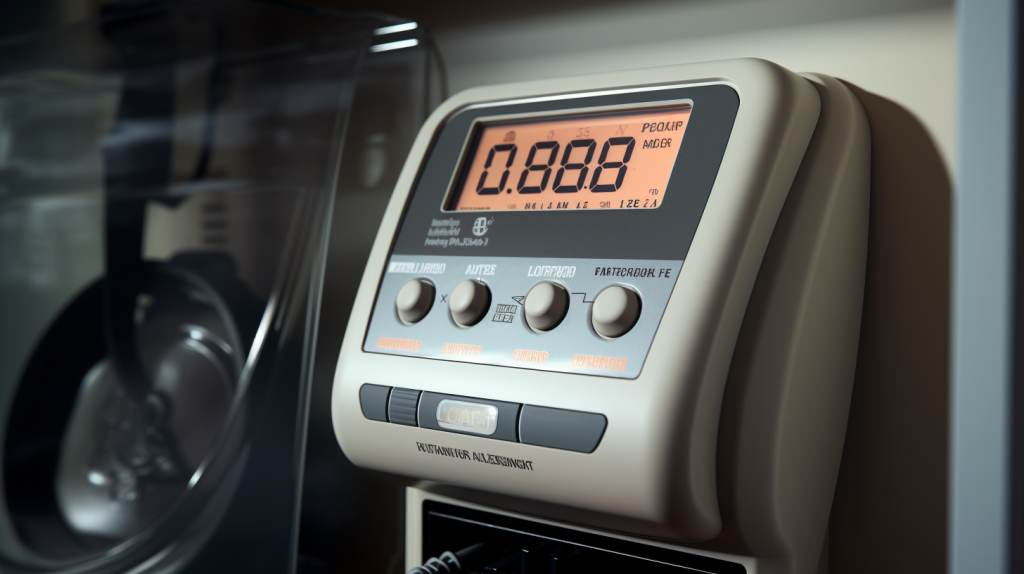
Calculating the financial impact of running a dehumidifier can be done by assessing energy consumption and comparing it to your current electricity rates. By understanding the energy usage of your dehumidifier, you can determine how much it will cost to operate and potentially identify ways to save money.
To calculate the cost of running a dehumidifier, multiply the energy consumption by your electricity rate. For example, if your electricity rate is $0.10 per kWh and you have Model B, the cost per hour of operation would be 2 kWh * $0.10 = $0.20.
Energy Cost Calculator
You can also use an energy cost calculator to work out the cost of your dehumidifier.
Frequently Asked Questions
Q: Are Dehumidifiers Expensive to Run?
A: Dehumidifier running costs vary depending on factors such as the dehumidifier size, energy efficiency, and the electricity rate in your area.
Q: How much does it cost to run a dehumidifier?
A: The cost to run a dehumidifier depends on its energy consumption, which is measured in watts. You can check the dehumidifier’s wattage rating and calculate the energy cost by multiplying it with the electricity rate.
Q: Do dehumidifiers use a lot of electricity?
A: Dehumidifiers can use a significant amount of electricity, especially if they run continuously or in high humidity conditions. However, energy-efficient dehumidifiers with an Energy Star rating consume less electricity.
Q: How does a dehumidifier work?
A: A dehumidifier works by drawing in humid air, passing it over cooling coils, which condense the moisture into water droplets, and then collecting the water in a tank or draining it out.
Q: What is the average cost of running a dehumidifier?
A: The average cost of running a dehumidifier depends on factors such as energy consumption, usage duration, and the electricity rate. It can range from a few dollars to tens of dollars per month.
Q: How much electricity does a dehumidifier use?
A: The electricity usage of a dehumidifier depends on its wattage and the number of hours it runs. On average, a 50-pint dehumidifier can consume around 500-700 watts per hour.
Q: Are dehumidifiers energy-efficient?
A: Yes, there are energy-efficient dehumidifiers available. Look for dehumidifiers with an Energy Star certification, as they are designed to consume less power while effectively removing moisture from the air.
Q: Does leaving a dehumidifier on all day increase the cost?
A: Leaving a dehumidifier on all day will increase the electricity cost. However, you can reduce the cost by using an energy-efficient dehumidifier and adjusting the settings based on the desired humidity level and moisture in the air.
Q: How can I reduce the cost of running a dehumidifier?
A: You can reduce the cost of running a dehumidifier by using an energy-efficient model, properly sizing the dehumidifier for the room, adjusting the settings based on the humidity level, and ensuring good ventilation in the area to minimize moisture accumulation.
Q: Do dehumidifiers work like air conditioners?
A: Dehumidifiers and air conditioners have similar functions, but they work differently. While air conditioners reduce humidity as a byproduct of cooling, dehumidifiers specifically focus on removing excess moisture from the air.
How Often Should I Run My Dehumidifier to Maintain Optimal Energy Efficiency?
To maintain optimal energy efficiency, run your dehumidifier for a few hours each day. This helps prevent excess moisture buildup and reduces the workload on the machine. Regular maintenance, like cleaning filters, also contributes to energy savings.
Can Using a Dehumidifier Help Reduce My Overall Energy Consumption in My Home?
Using a dehumidifier can reduce your overall energy consumption in your home, resulting in lower energy costs. Additionally, it can have a positive impact on indoor air quality by reducing excess moisture.
Are There Any Potential Health Benefits to Using a Dehumidifier?
Using a dehumidifier can have potential health benefits by reducing mold, allergens, and dust mites in your home. The effectiveness of dehumidifiers in improving air quality makes them a valuable investment for your well-being.
Can a Dehumidifier Help Prevent Mold Growth in My Home?
Preventing mold growth in your home is essential, and using a dehumidifier can be beneficial. It helps regulate moisture levels, reducing the likelihood of mold formation. Now, let’s address the question of whether dehumidifiers are expensive to run.
Are There Any Alternative Methods to Reduce Humidity Levels in a Home Without Using a Dehumidifier?
To reduce humidity levels in your home without using a dehumidifier, there are alternative methods and natural remedies available. These options can be effective and cost-efficient, providing a practical solution for managing humidity levels in your home.
Conclusion
Overall, dehumidifiers can be expensive to run due to their energy consumption. However, there are ways to reduce operating costs, such as choosing an energy-efficient model and using it only when necessary.
By considering factors like room size, humidity levels, and desired comfort levels, you can calculate the financial impact of running a dehumidifier.
It is important to weigh the benefits of reducing humidity against the cost of operation to determine if a dehumidifier is a worthwhile investment for your specific needs.
Last Updated: September 10, 2023

